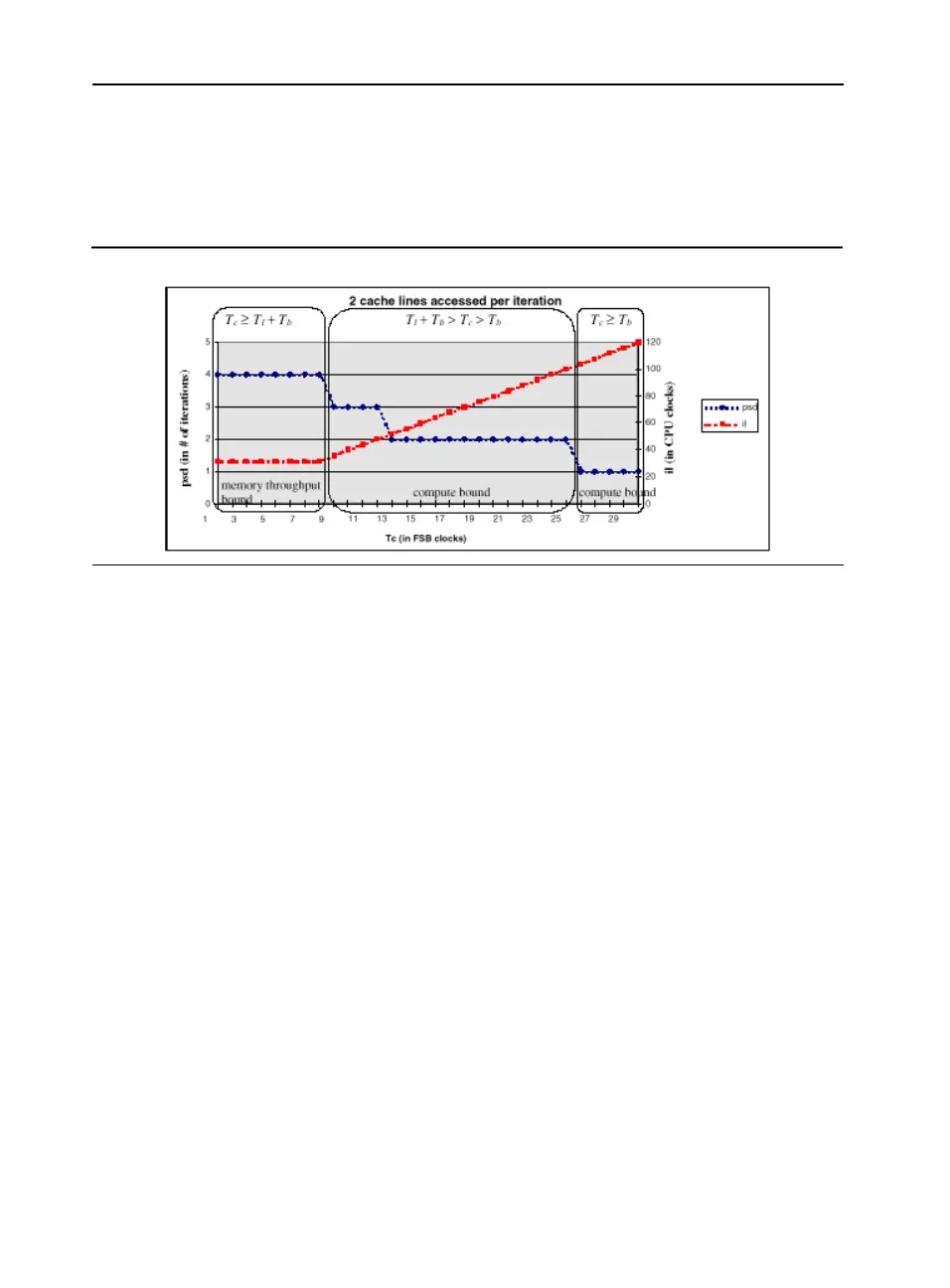IA-32 Intel® Architecture Optimization
E-12
Now for the case T
l
=18, T
b
=8 (2 cache lines are needed per iteration)
examine the following graph. Consider the graph of accesses per
iteration in example 1, Figure E-6.
The prefetch scheduling distance is a step function of T
c
, the
computation latency. The steady state iteration latency (il) is either
memory-bound or compute-bound depending on T
c
if prefetches are
scheduled effectively.
The graph in example 2 of accesses per iteration in Figure E-7 shows
the results for prefetching multiple cache lines per iteration. The cases
shown are for 2, 4, and 6 cache lines per iteration, resulting in differing
burst latencies. (T
l
= 18, T
b
= 8, 16, 24).
Figure E-6 Accesses per Iteration, Example 1

